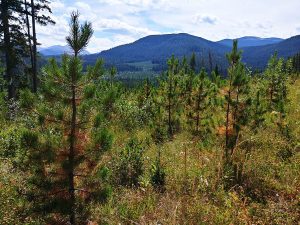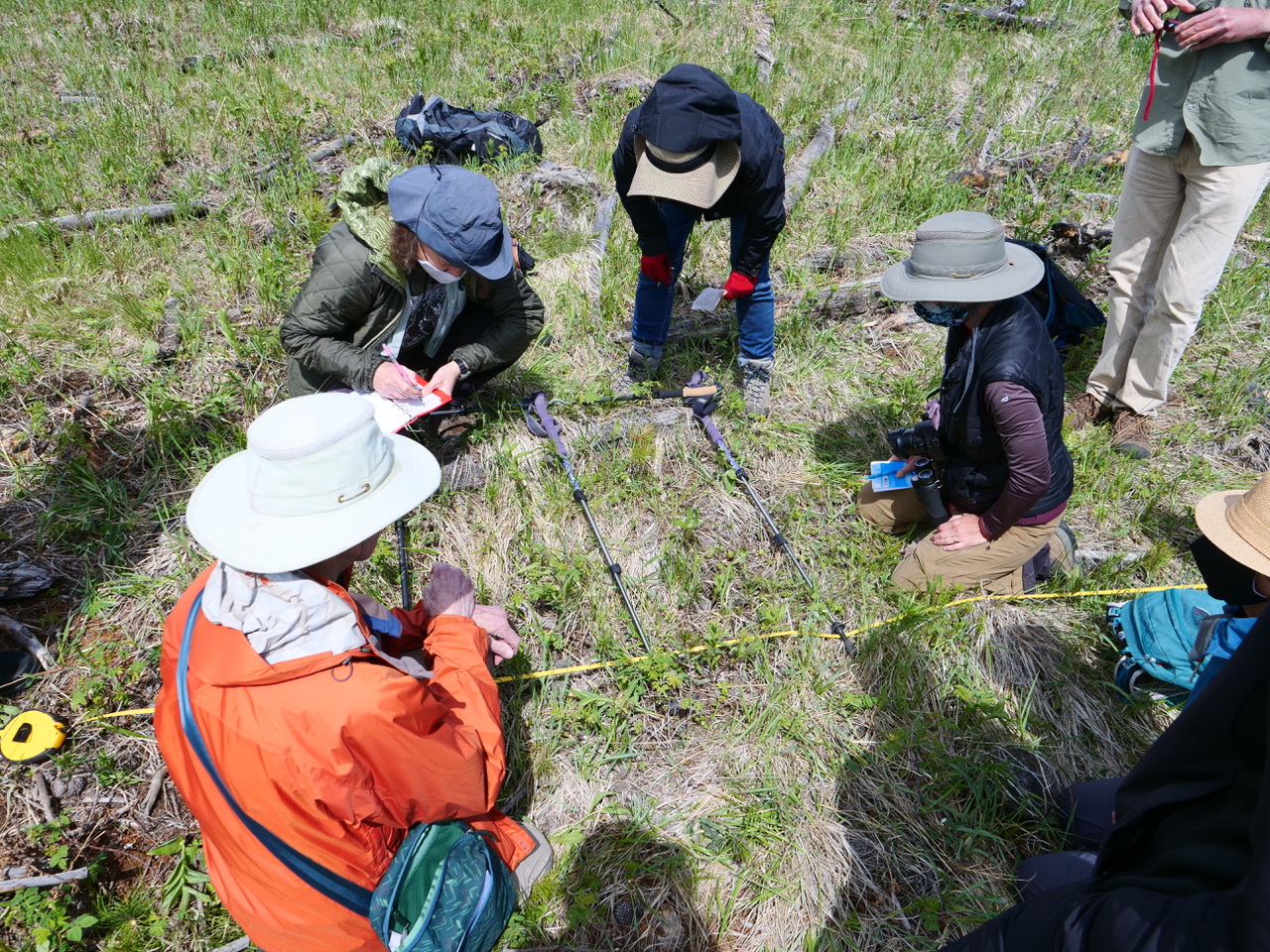The following post is adapted from an article that first appeared in the spring 2022 issue of BIOS, the quarterly newsletter of the Alberta Society of Professional Biologists.
Technological advances are changing the way biologists work. From number-crunching supercomputers to eagle-eyed satellite imagery, there are so many new ways to see, analyze, and make sense of the natural world that it can feel like we spend all our time just keeping up.
But there’s another side to the technological coin: The rise of open-access datasets, imagery, and computing platforms is actually helping to make biodiversity monitoring more accessible and “democratic” than ever. This is a story about why people still matter in biology—people like those involved in community-led citizen science groups such as Forest Matters, with whom the ABMI’s team has had the pleasure of working for several years now.
In 2019, Forest Matters initiated the Ecological Recovery Project (ERP). Developed by a grassroots crew of engaged and very capable amateur naturalists, the project uses citizen observations to track the ecological recovery of local human footprints such as harvest areas. “Our aim is to provide factual, timely public land-use conservation and planning information to citizens,” says Forest Matters. Carefully planned and organized, the ERP’s specific goal, beyond intrinsic interest, is to support informed engagement with the forestry sector and government on future decision-making, policies, and practices. Forest Matters reached out to the ABMI as the ERP was taking shape, and over the years we’ve been happy to support the ERP’s work with data reporting, methods development, and camera/ARU deployment.

The Rocky Mountain foothills are home to forests in various stages of regeneration (Credit: Jen Hird/ABMI)
Separately, (as we highlighted in a recent post) ABMI remote sensing scientist Jen Hird has been advancing the emerging science of spectral regeneration, using cutting-edge Landsat imagery and Google Earth Engine to track the recovery of plant life after disturbances. The idea is that as forests and vegetation communities grow and change, their spectral signatures as seen from space also change. If you can understand how changing spectral signatures relate to on-the-ground changes in a recovering forest (something the ABMI is actively working on), you have a basis for monitoring forest regeneration simply and efficiently even over large areas. The cool thing about this approach is that, despite seeming—and literally being—space-age, it relies on open-access imagery and cloud-computing platforms that can be used by anyone, including you if you visit the open-access visualization tool (abmi.ca/srviewer) Jen developed. Free to anyone with a web browser and internet connection, the tool lets users with no mapping or geospatial experience pan around the dataset and explore relevant harvest areas to see the data compiled for that area.
As it happens, the visualization tool also caught the attention of Forest Matters, who realized it was a perfect fit for the ERP. Jen, fresh off publishing a paper on how work like this is ripe for citizen scientist participation, soon found herself engaged in a real-life proof of concept, and the experience has been inspiring.
“[Forest Matters is] an incredibly engaged, enthusiastic, and driven group of individuals with a very keen interest in the ecological health of their local environments,” says Jen. “They work to inform themselves and seek out all sources of information on forest ecological recovery they can find, and they’re meticulous in ensuring their information is scientifically-based and sourced from peer-reviewed publications or reports from ecologists, foresters, biologists, and other scientists. They’re also very active in engaging not only with their local community, but with industry, government, and other organizations. They’re not an activist group, but rather want to be part of solutions to sustainable landscape management.” Plus, Jen continues, “The members of FM are a joy to be around!”
Forest Matters has been using Jen’s spectral regeneration tool to look at patterns of forest harvest over time, and then using this information to select ground data collection sites that cover varying ages or stages of spectral regeneration. As Forest Matters notes, “Working with Jen has enabled us to effectively develop a plan to expand our ecological recovery surveys beyond our initial work in the Ghost River watershed.” Once selected, survey sites are visited in person by members of Forest Matters, who collect a wide range of data on things like species presence, woody debris, tree age, and more, all based on rigorous methods that are rooted in scientific best practice. This kind of information should help to paint a more complete picture of what regenerating forests look like, and how conditions on the ground relate to what we can see from space.
In doing their work, Forest Matters’ citizen scientists are helping to engage and inform the broader community on local issues of land use and land management, while providing further data and insights on the recovery of anthropogenically disturbed forests. And as Jen points out, it’s a two-way street: “I’m very much hoping that as the ERP continues to collect data, this can be something that can feed back into our understandings of recovery and how we capture that through future information products. I think we could benefit in potentially leveraging data collected through the ERP to better understand or refine our spectral regeneration product.”
We love the circularity of this story, and the symbiotic relationship between the highest and lowest of techs. It’s reassuring that, as the tools of science become more powerful and technological and impersonal, there’s still a role to be played by people on the ground whose guiding qualifications are simple curiosity and the fact that they care. It’s heartening, too, that such people exist—in Forest Matters, and in the many other community and citizen scientist groups and initiatives now flourishing across Alberta. There’s impressive work being done by citizen scientists around our province and, as Jen says, “I’m really looking forward to seeing where this goes!”
Democratic, indeed.
***
The ABMI’s It’s Our Nature to Know webinar series continues in April with Amphibians of Alberta (April 13) and the WildTrax platform (April 27). As always, the webinars are free, but we ask that you register so we know to expect you. Hope to see you there!

